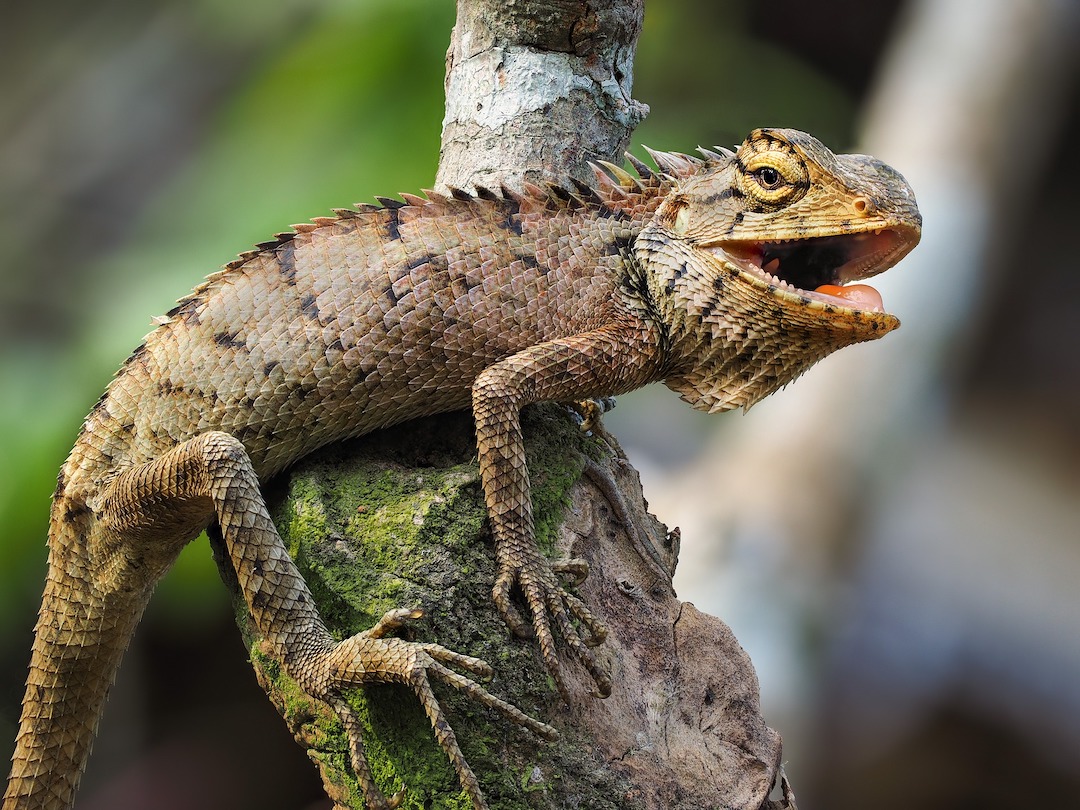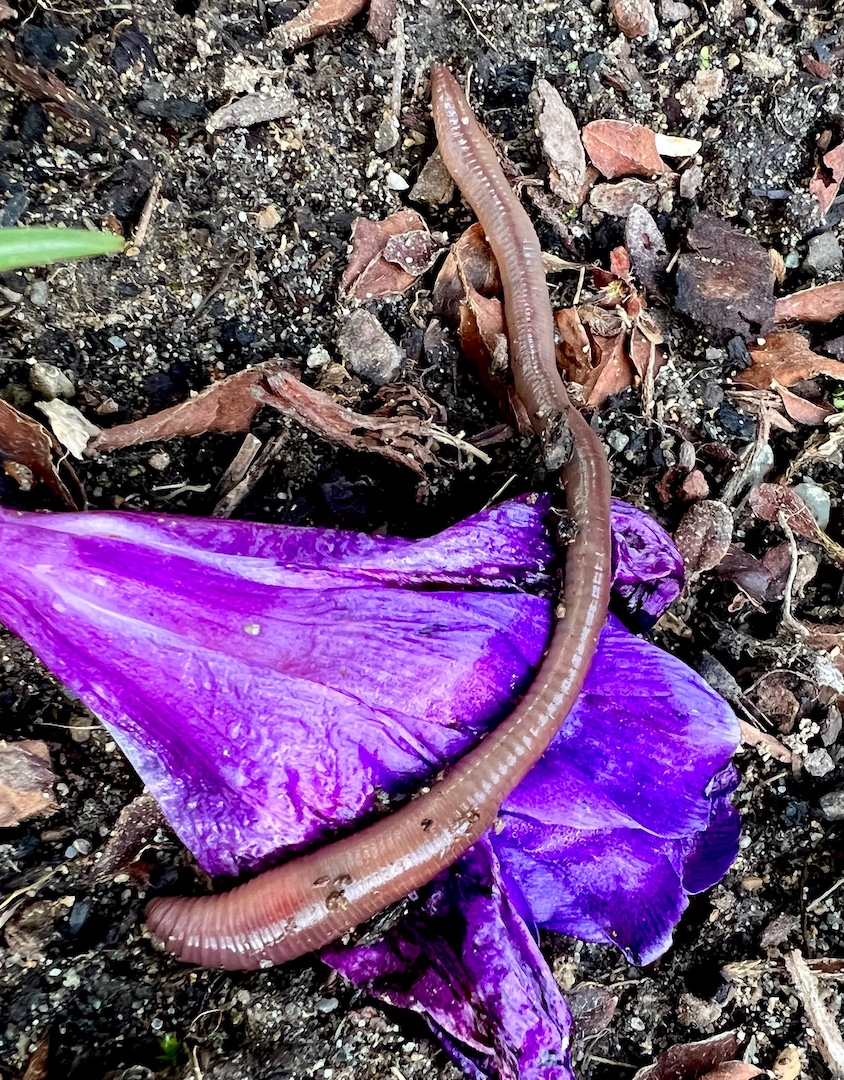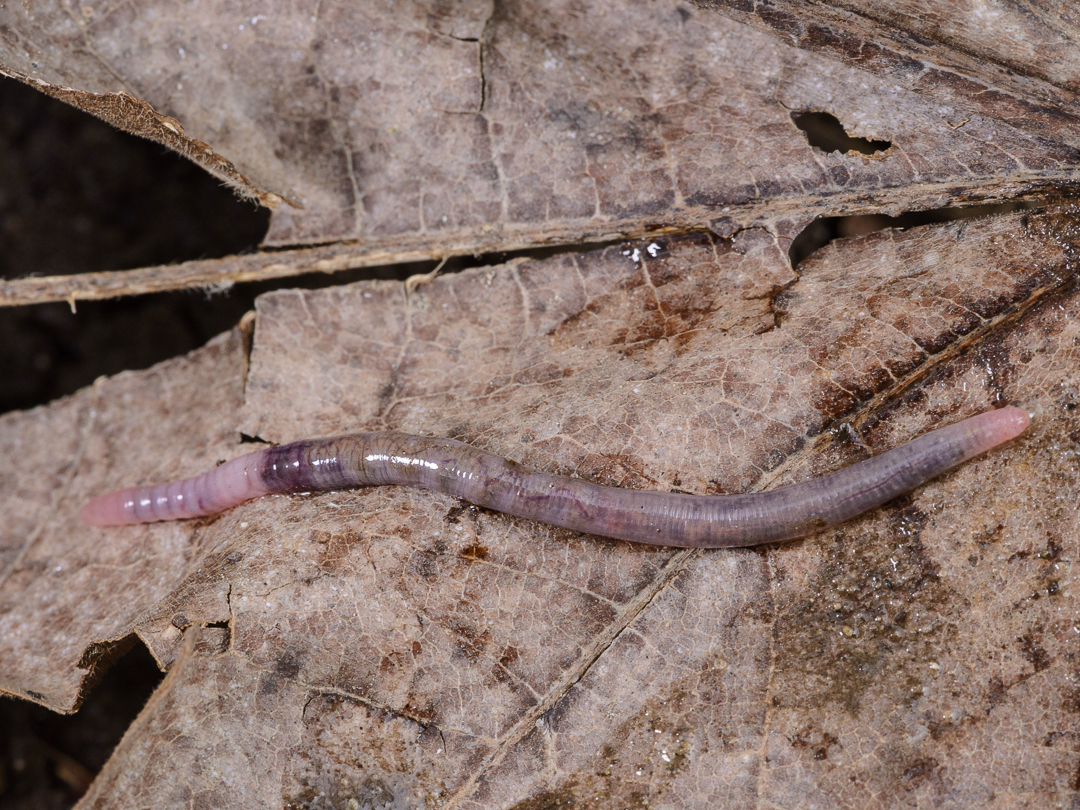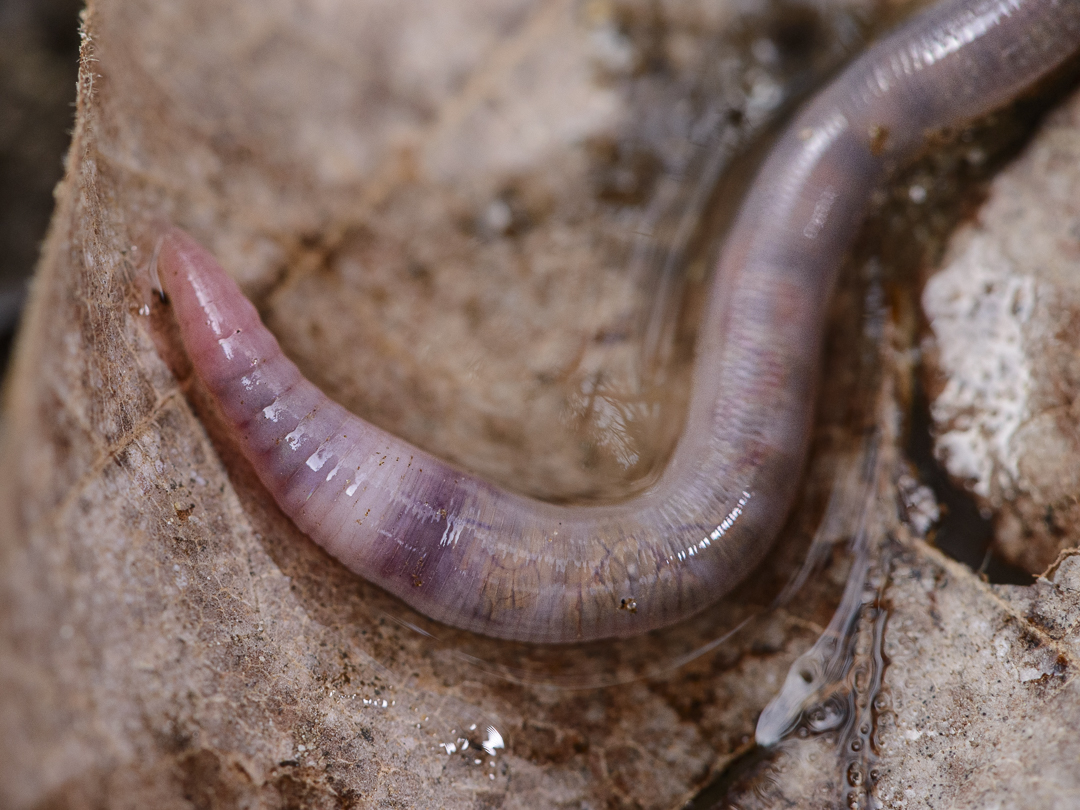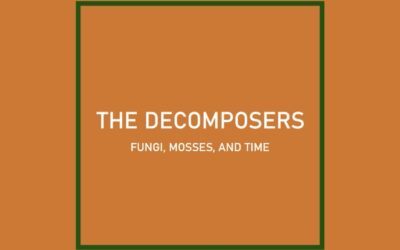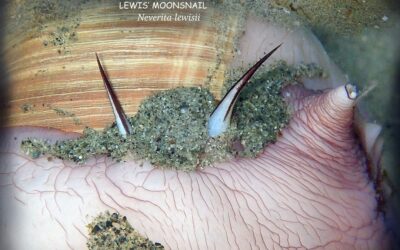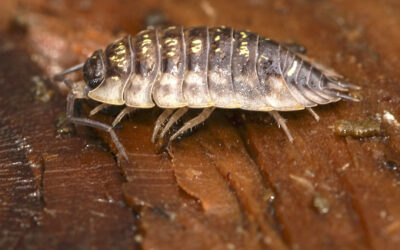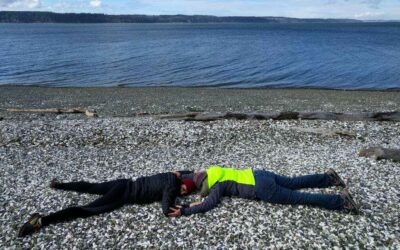I DIG WORMS
by Barb Erickson, Spring 2022
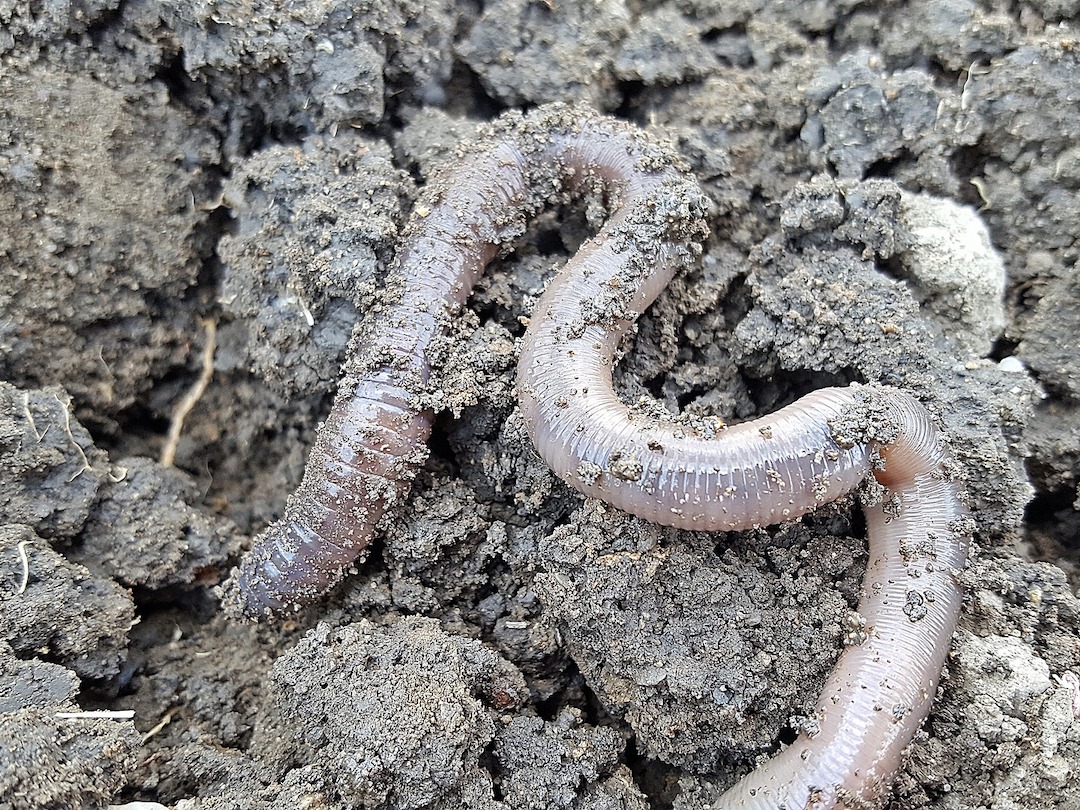
Nightcrawler photo by SanduStefan from Pixabay
I DIG WORMS
By Barb Erickson, Spring 2022
I remember the iguana and the earthworm. The iguana lived in the back of the room, in a cage made of two-by-fours and chicken wire. When I say “…in the back of the room,” I mean just that — the cage was constructed like a room within a room and took up a lot of space, reaching from floor to ceiling, stretching from one wall to the other. Miss Asp had built this structure herself because she had agreed to take this lizard, which had somehow come in with a load of bananas for a local grocery store, for her students to study — sort of a class mascot, if you will. I was amazed and seriously impressed. One did NOT find iguanas in Montana!
Miss Asp was my eighth-grade science teacher, who soon became my idol. To begin with, she was the first woman science teacher that I ever had — or knew of. She loved all animals and obviously would go to almost any length to care for them. A very down-to-earth mid-Westerner, she got to know her students very well. A few of us kids would often stop into her basement classroom after school to watch the iguana, talk about whatever we were currently studying, or just chat. It was obvious that she respected and liked her students and enjoyed spending time with them. She was patient, kind, and inspirational. We loved it when she told us that her last name was also the name for a snake.
That was the first year that I remember being introduced to science fairs. With Miss Asp’s encouragement, I decided to do a project. I’m not sure how I settled on what I did, but looking back, it totally reflected me. It was not highly scientific, but combined my interests in art, science, and the wonder of both. Using chicken wire and papier-mâché, I fashioned a large, cut-away section of a common earthworm, showing its internal parts. I carefully painted and labeled all the parts and studied up on those so that I could answer questions about them. I was surprised when I won my division of the fair at our school. My mom told me years later that she talked to Miss Asp because she was worried that so many boys gathered around me at the fair. Why wouldn’t they? I had carried with me a pet anole lizard that night!
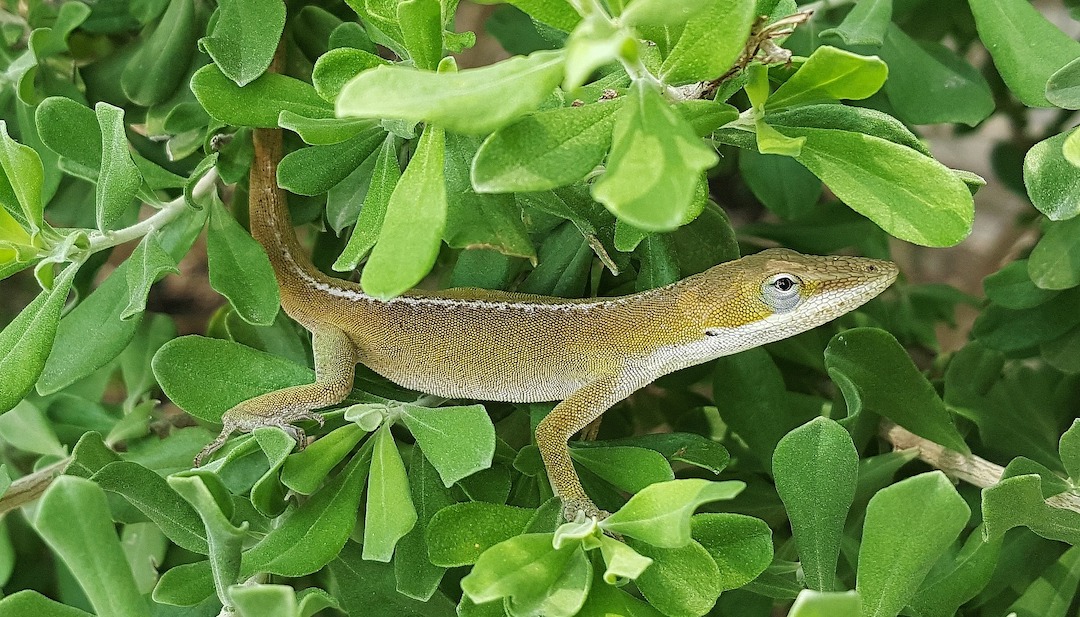
Anole lizard photo by Brett_Hondow from Pixabay
Miss Asp told her not to worry, that I was perfectly normal and attracted boys because we were interested in similar things. In that day, most girls were not interested in such things; those who were, didn’t admit it. I was again surprised when I went on to take a first place at the district fair and then on to the state fair at the university. There, they asked me questions that I wasn’t prepared to answer, so I came home with an Honorable Mention, but still pleased that I’d been able to go at all.
I have always felt close to the earth and her creatures. Being raised in town, the only “wild” for me on most days, were the few scattered empty lots in our neighborhood, which became overgrown with wild grasses, weeds, and brambles. The only wild animals for me were the birds, bugs, and small amphibians and reptiles I might encounter as I roamed the neighborhood in search of them. Mostly, I helped dig up earthworms, which we called “angleworms,” for fishing bait, but found myself carefully examining them as I did so. I wondered what they did below ground — how they moved, sensed their surroundings, ate, and reproduced. Natural curiosity led me to find out…
photo by Eliza Evans
I could easily see these worms stretched and compressed their bodies, and somehow, they were able to “grab hold” of the soil to pull themselves back under ground when uncovered. Close examination showed their bodies were made up of segments, or multiple rings, which I now know determines their phylum as Annelida, which means “little rings.”
When held, an earthworm feels moist and slimy. This enables them to slip easily through the soil. The top side of it feels smooth, but the sides and underside feel rougher. This is because they have several pairs of fine, stiff bristles on each segment. It is these bristles which help them grab onto the soil as they move through it. They have muscle fibers both around and lengthwise in their bodies, which allows for great flexibility; one part of their body is able to enlarge or contract, increase, or decrease in length, without affecting the rest of the body.
I also noticed a larger, swollen section near one end of the worm. Although it took me some research to find out, I learned these worms are bisexual, or hermaphroditic, so each individual has both male and female reproductive systems. At 13, this was a revelation for me, and I hoped I would not be asked to explain it during the science fair! Still, the whole concept fascinated me; Hermaphrodites produce both eggs and sperm, and in the earthworm, reproduction occurs through this swollen part. These worms do not self-fertilize, but line up next to another worm to exchange gametes; this helps to prevent inbreeding and assures diversity. After mating, the worms secrete a mucus, which forms into an outer pouch, or cocoon, around the worm. The worm then slips this cocoon off and the open ends of the cocoon close, sealing the egg(s) and sperm inside. After fertilization, one or more young worms form. They break out of the cocoon several weeks later, when they are on their own. Worms can form a number of cocoons after one breeding, so are quite prolific.
 See a worm cocoon
See a worm cocoon
video of a worm in action by John F. Williams
Earthworms have no brain as we think of it but have two clumps of nerve tissue near their front end. A double nerve runs along the bottom side of the body, with branches running into each segment. They have nerve receptors for touch, smell or taste, and light; Thus, they are very well equipped for life in their particular environment.
The front (left) of this worm is expanded. One can see through the skin that there are different looking areas of the worm. The white and dark sections are much larger when the worm is expanded like this than in the contracted worm photo below. photo by John F. Williams
A worm’s body is a tube within a tube. The inner tube is made up of the digestive system and other organs needed for it to function. An earthworm eats dirt, which it pulls into its mouth, found in the front, pointed end of the body. The nutrition it needs comes from the decayed bits of leaves and other organic matter in the dirt, so the worm needs to separate those parts out to be absorbed. To do this, it has specialized digestive parts in its gut. From its mouth the soil moves into and through a pharynx and an esophagus, then into a crop for temporary storage before passing into several gizzards, which grind up the contents before they pass into the stomach. The stomach secretes digestive juices to neutralize acids and dissolve the organic matter. From there everything passes into the intestine where the nutrients are absorbed and the remaining waste passes on out of the body through the anus in the rear, blunt end of the body.
 Click here to see some very nice illustrations of worm anatomy by the University of Pennsylvania
Click here to see some very nice illustrations of worm anatomy by the University of Pennsylvania
 Time lapse of vermicomposting
Time lapse of vermicomposting
Worm excrement, called castings, is an excellent source of compost, being a mixture of enzymes, bacteria, animal manure, remnants of plant matter and earthworm cocoons. It is even sold commercially as Vermicompost. Most of us only see it when it appears above ground as small piles or as miniature heaps of coiled strands of compacted mud. Below ground it does much to improve and enrich the soil for growing plants. More than a million earthworms may be found in an acre of land and a single earthworm can produce up to ten pounds of castings per year!
When I was a kid, my mom would sometimes buy chickens from a local farmer for a very good price. The price was low because the chickens came to us with only their heads cut off — the plucking and cleaning of them fell to us. It was a lot of work for my mom, but more like play for me. Full of curiosity, I remember dragging a chair up to the kitchen sink to watch mom as she gutted those birds. I was always full of questions, and she patiently showed me each part of the internal organs and explained what purpose they served. And so it was, by the time I reached eighth grade and decided to build an earthworm, I was familiar with a digestive tract with a crop and gizzard. Thus, those connections between species began to make sense.
In our yards and forests, there are three distinct types of worms to be found. Those such as the red wiggler, or brandling worm, are found in leaf litter, manure, compost piles and bins. They live on the surface of the soil, eat rotting organic matter, and have a high rate of reproduction. Other worms, such as the red marsh, or leaf worm, live in topsoil, make lateral burrows, and are the only worms that eat enormous amounts of soil. Since they prefer soils rich in organic matter, they don’t affect surface litter, but are helpful in the decomposition of dead plant roots and in bringing air into soils. The large nightcrawler, or fish worm, lives deeper down, but comes to the surface at night to drag leaves and other organic matter down into their permanent vertical burrows. These worms are important for the decomposition of leaf litter and for rich soil formation.
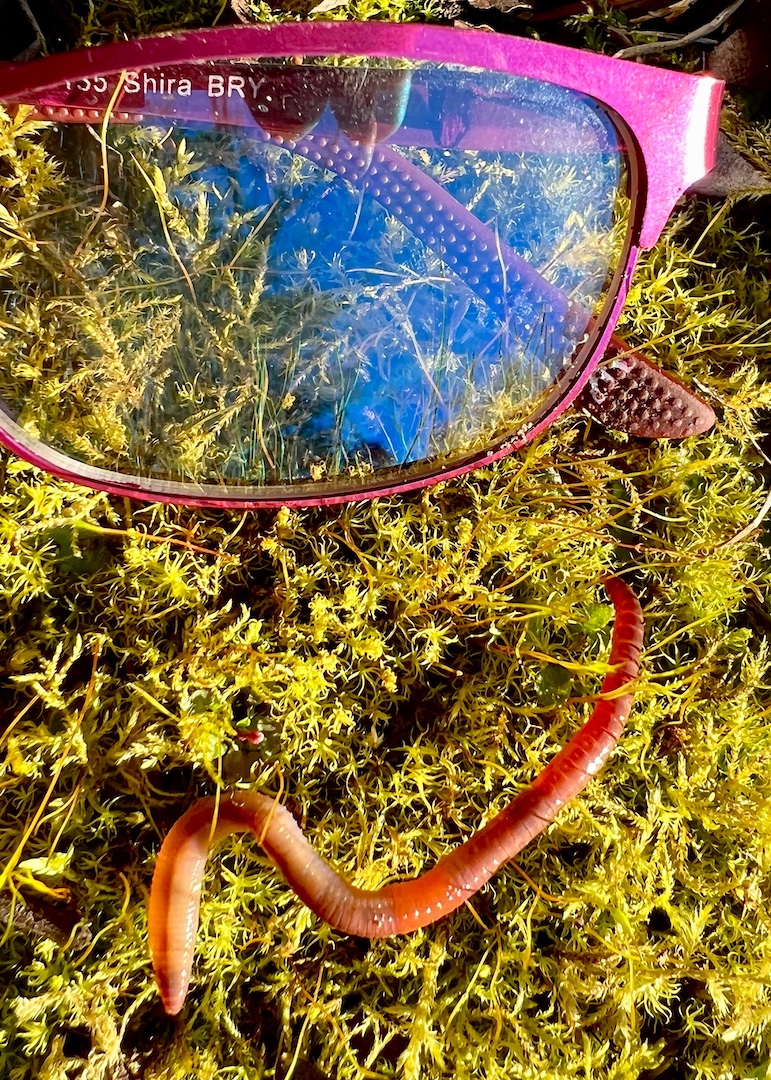
photo by Eliza Evans
Worldwide, there are approximately 4,000 species of earthworms. In North America, there are around 180 species in 12 different families, of which one-third have been introduced from elsewhere. Many of our earthworms were wiped out during the last Ice Age because frozen ground and the weight and movement of the glaciers killed them. Fortunately, We still have some native earthworms in the Pacific Northwest. However, there are also quite a few non-native species, many of which arrived with the early European colonists, who brought their plants with them. Since humans tend to move around, and often bring plants with them, newer, non-native worms continue to arrive. The severity of the impact of these non-native species varies depending on where they occur, the local plant life, and soil conditions.
Oregon and Washington are home to giant, but elusive, earthworms. In Washington, most notable are the giant Palouse earthworms. These seem to be rare but have been found from northern Idaho through the Palouse region to the Cascade mountains. They are said to reach eight or more inches in length and early reports said they smell strongly of lilies. As with any rare species, separating fact from myth is difficult. At this time, they are considered to be native to our area and research into the secret lives of these creatures is ongoing.
 See more about the Giant Palouse Earthworm
See more about the Giant Palouse Earthworm
A number of animals depend on worms for a part of their nutrition. These include most birds (even chickens!), as well as weasels, stoats, otters, mink, turtles, frogs, and some snakes. Many omnivores eat them, with pigs and raccoons among the most common to do so.
Dead chickens, fishing worms, an iguana, and a very special kind of asp — all had an impact on my youthful learning of the myriad species on this planet with their intricate compositions and interconnectedness. Those early experiences — and many others — have inspired me to a lifetime of learning and a desire to share with others what I’ve learned.
No matter where you live or how old you are, the natural world is out there waiting to be discovered. All you need do is explore, observe, and be curious. Curiosity gives rise to questions, which spur on a desire for answers. Those answers are there, although to find them you sometimes need to dig deep…I say GO FOR IT!

Barb Erickson was born and raised in Montana, and developed a deep love, appreciation, and respect for the land and all its inhabitants. She is a life-long learner and educator. Now retired, she fills her days with nature studies, writing, photography, and volunteering with environmental programs. She’s lived in Poulsbo for 40+ years with her husband of 55 years and a little mutt named Scruffy.
Here’s the link to her blog, Ladybug’s Lair:
Ladybug’s Lair (flyhometoladybugslair.blogspot.com)
MORE WORM VIDEOS
MORE WORM VIDEOS
 Giant Earthworm with David Attenborough
Giant Earthworm with David Attenborough
 Earthworms are invasive?
Earthworms are invasive?
 The Amazing World of Earthworms
The Amazing World of Earthworms
Table of Contents, Issue #15, Spring 2022
Eelgrass Flowering
by Sandy Wyllie-Echeverria and Isabella Brown, Spring 2022 Seagrass Lab, Friday Harbor Laboratories, University of Washington Eelgrass at low tide, showing mostly flat green leaves and a yellowish, round flowering head near the center of the photo. photo by John F....
The Decomposers
Video by Tom and Sara Noland Sara and Thomas Noland are naturalists who live in Everett, Washington. They live in a tiny house with many cats but are fortunate to have a big yard with lots of trees, birds, and lichens. They frequently take field trips to enjoy and...
Marine Ground Dwellers
Images by Jan KocianImages by Jan Kociansometimes worms don’t live in the ground ... especially in the Salish Sea. These curious creatures come in many forms from feathers to trumpets.moon snails and nudibranchs (sea slugs) Some of the denizens of the Salish Sea floor...
Pillbugs, Sowbugs
by Tom Noland, Spring 2022Oniscus sowbug. photo by John F. WilliamsOniscus sowbug. photo by John F. Williamsby Thomas Noland, Spring 2022Pillbugs and sowbugs are some of the small creatures you’ll commonly find on the surface of the soil. You’ll often encounter them...
Poetry-15
Spring 2022Salish Sea, Cama Beach Historical State Park, Camano Island, Washington.* photo by Luke VolkmannSalish Sea, Cama Beach Historical State Park, Camano Island, Washington.* photo by Luke VolkmannSpring 2022From the Ground Up by Sheryl Shapiro Venus shining...
PLEASE HELP SUPPORT
SALISH MAGAZINE
DONATE
Salish Magazine contains no advertising and is free. Your donation is one big way you can help us inspire people with stories about things that they can see outdoors in our Salish Sea region.
We also don't advertise Salish Magazine, so please spread the word of this online resource to your friends and colleagues.
Thanks so much for your interest and your support.
We also don't advertise Salish Magazine, so please spread the word of this online resource to your friends and colleagues.
Thanks so much for your interest and your support.

